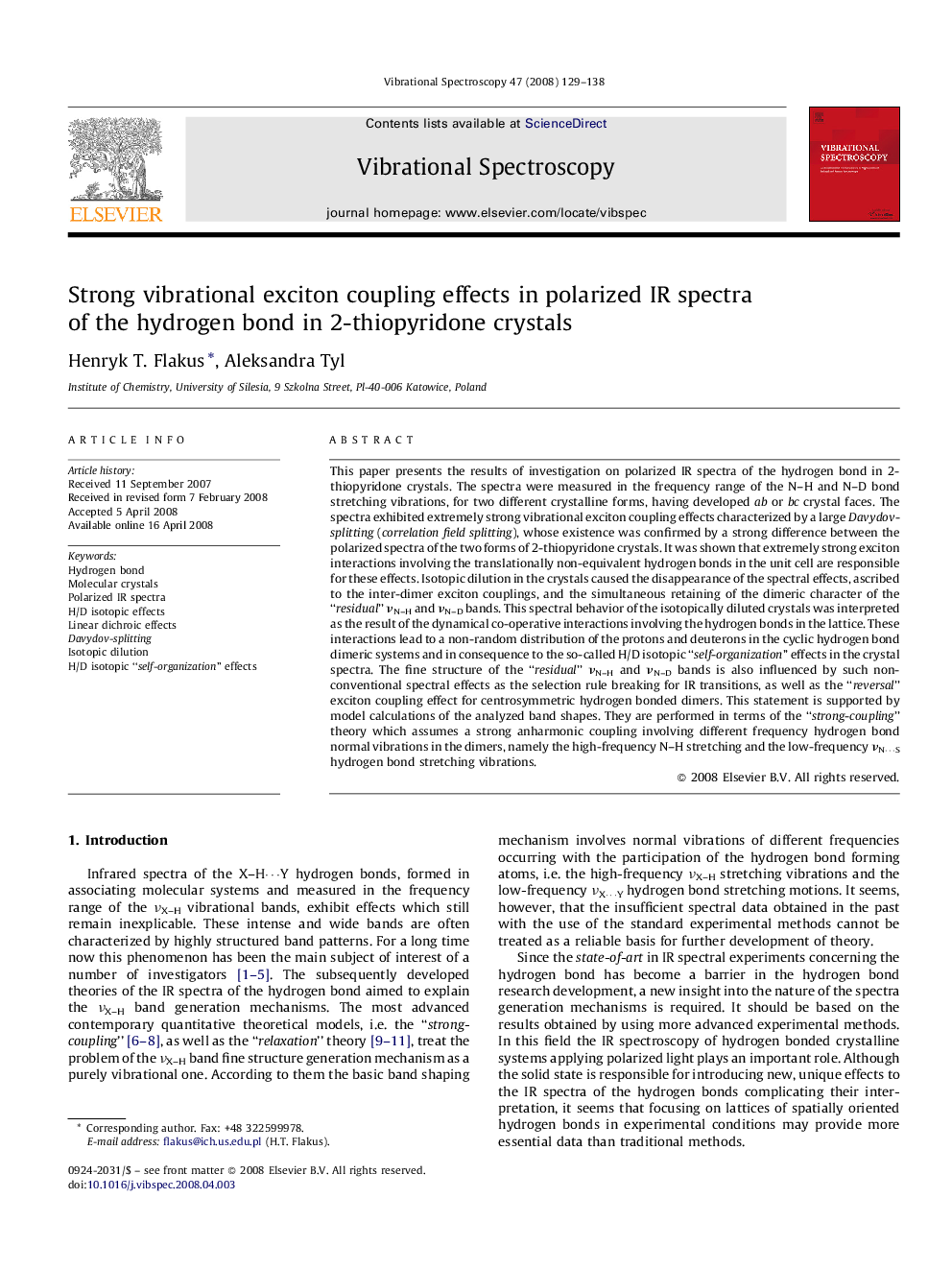| Article ID | Journal | Published Year | Pages | File Type |
|---|---|---|---|---|
| 1250383 | Vibrational Spectroscopy | 2008 | 10 Pages |
Abstract
This paper presents the results of investigation on polarized IR spectra of the hydrogen bond in 2-thiopyridone crystals. The spectra were measured in the frequency range of the NH and ND bond stretching vibrations, for two different crystalline forms, having developed ab or bc crystal faces. The spectra exhibited extremely strong vibrational exciton coupling effects characterized by a large Davydov-splitting (correlation field splitting), whose existence was confirmed by a strong difference between the polarized spectra of the two forms of 2-thiopyridone crystals. It was shown that extremely strong exciton interactions involving the translationally non-equivalent hydrogen bonds in the unit cell are responsible for these effects. Isotopic dilution in the crystals caused the disappearance of the spectral effects, ascribed to the inter-dimer exciton couplings, and the simultaneous retaining of the dimeric character of the “residual” νNH and νND bands. This spectral behavior of the isotopically diluted crystals was interpreted as the result of the dynamical co-operative interactions involving the hydrogen bonds in the lattice. These interactions lead to a non-random distribution of the protons and deuterons in the cyclic hydrogen bond dimeric systems and in consequence to the so-called H/D isotopic “self-organization” effects in the crystal spectra. The fine structure of the “residual” νNH and νND bands is also influenced by such non-conventional spectral effects as the selection rule breaking for IR transitions, as well as the “reversal” exciton coupling effect for centrosymmetric hydrogen bonded dimers. This statement is supported by model calculations of the analyzed band shapes. They are performed in terms of the “strong-coupling” theory which assumes a strong anharmonic coupling involving different frequency hydrogen bond normal vibrations in the dimers, namely the high-frequency NH stretching and the low-frequency νNâ¯S hydrogen bond stretching vibrations.
Keywords
Related Topics
Physical Sciences and Engineering
Chemistry
Analytical Chemistry
Authors
Henryk T. Flakus, Aleksandra Tyl,
